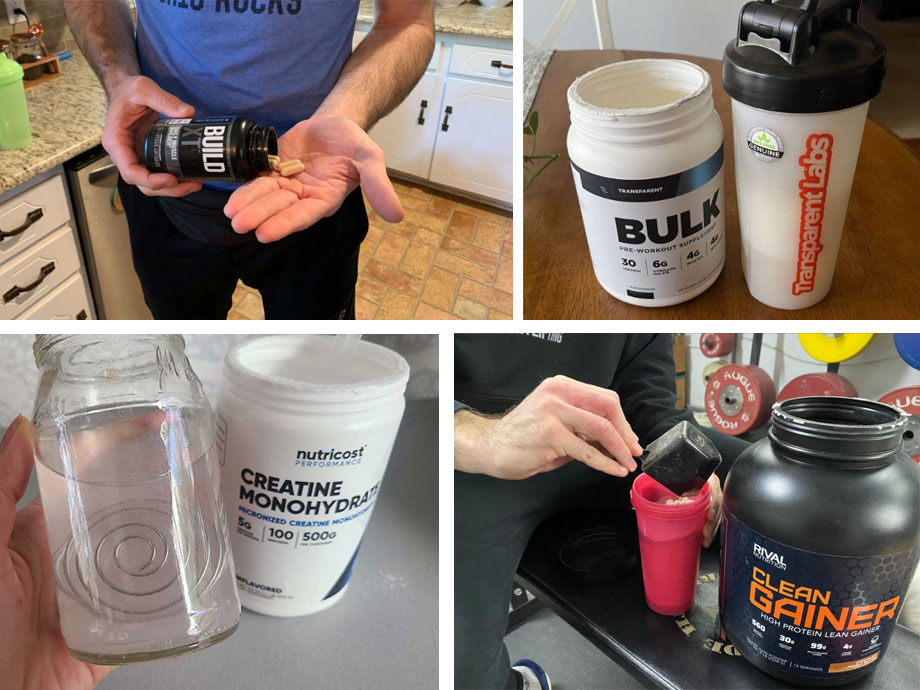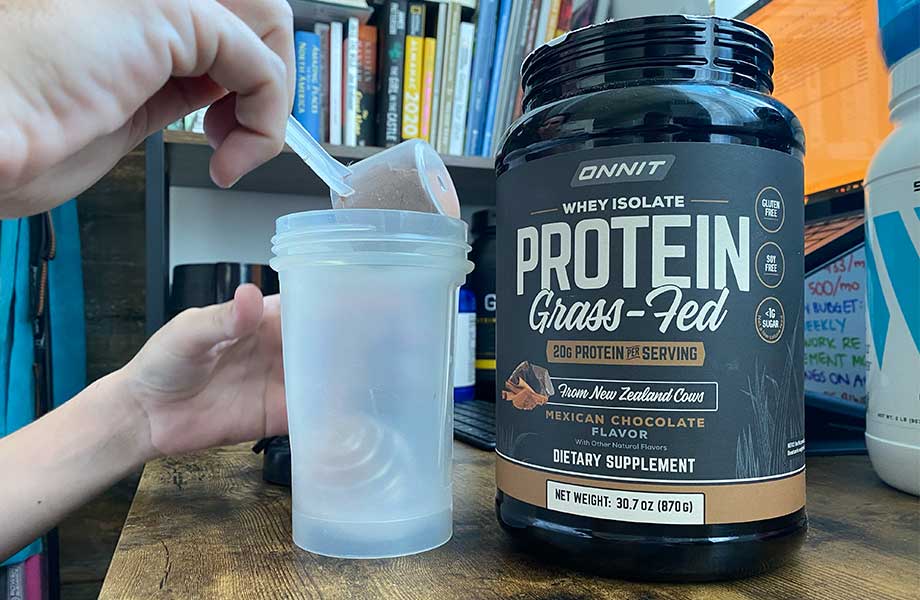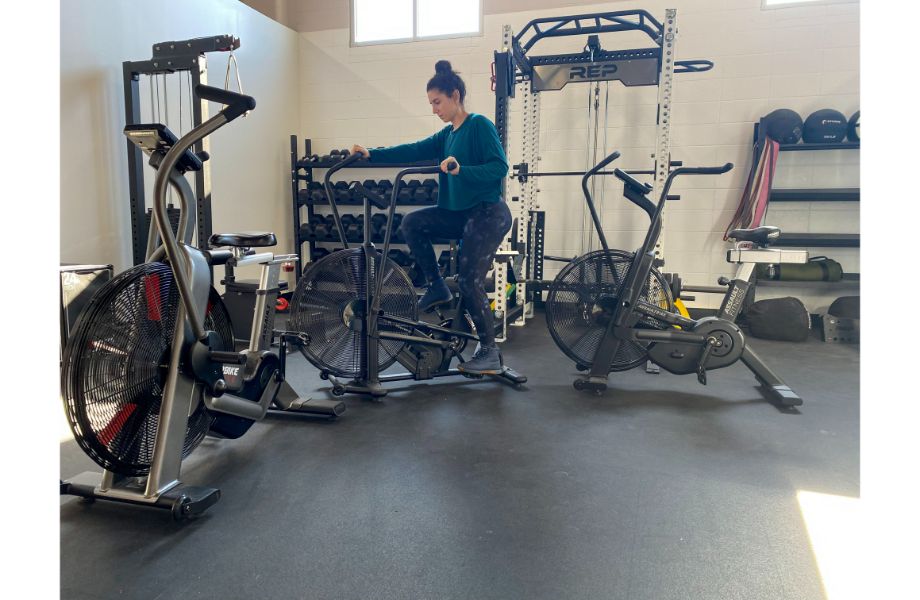In our modern day world of Sci-Fi-turned-reality, we may not have hovering skateboards or matter transporters, but that doesn’t mean our technology isn’t light years ahead of what our grandparents had.
This may be obvious when we use our pocket sized super-computers, but unless you are a hardcore sneakerhead, it may be less obvious (but no less true) when looking down at your running shoes. Gone are the days when Jesse Owens used a strip of leather with some nails punched into it. Today, we have billion-dollar companies competing in laboratories all over the world trying to create the perfect shoe.
RELATED: Best Treadmill Running Shoes
Let us be your Al Bundy as we guide you through the amazing anatomy of a running shoe.
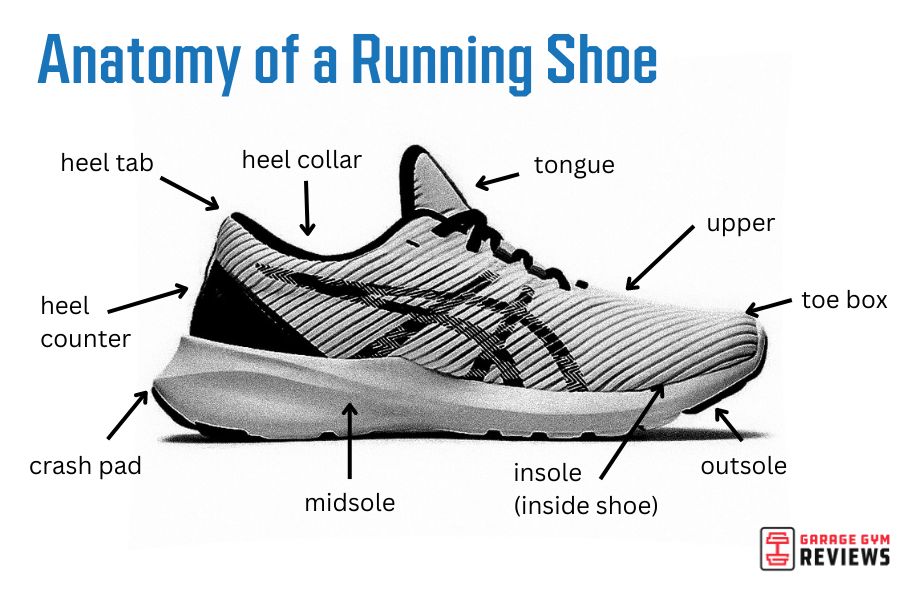
Shoe Anatomy Glossary
Let’s take a look at the main terms you might come across when reading about running shoes.
Upper
This is the upper, outer part of the shoe that gives the shoe its recognizable profile. It is typically made of leather, rubber, or a mesh fabric to promote breathability. The upper is also where the shoelaces (should they exist) connect to the running shoe.
Sole
This is neither the inherent essence of each human, nor the warm ball 93 million miles from earth, nor tasty fish that likes to be sauteed in butter.
The sole of a running shoe is the bottommost portion, either glued or sewn to the upper. The sole both contacts the ground (the very bottom of the shoe) and the foot itself (or an insole or orthotic placed inside), and, as such, is broken up into two divisions; the midsole and the outsole.
Midsole
The midsole is the cushion of the running shoe. It lies directly on top of the outsole. Think of it as like the inflatable tube in your bike tire, while the rubber of the bike tire is the outsole. Minimalist shoes will limit the amount of cushion, while so-called “maximal” shoes (like Hoka) designed as racing shoes may have extra cushioning.
Outsole
This is where the rubber meets the road. Literally, this is usually made of carbon rubber (this is just rubber with bits of carbon added to it). Trail running shoes will have specialized soles based on the nature of the terrain. Minimalist shoes make use of technology that allows air to be injected into rubber to create a lighter, more pliable form known as blown rubber.
Heel
The Bad Guy of each pair of shoes, the heel is where the rearmost portion of the foot slots in. The heel counter is a supportive insert that provides stability through the heel.
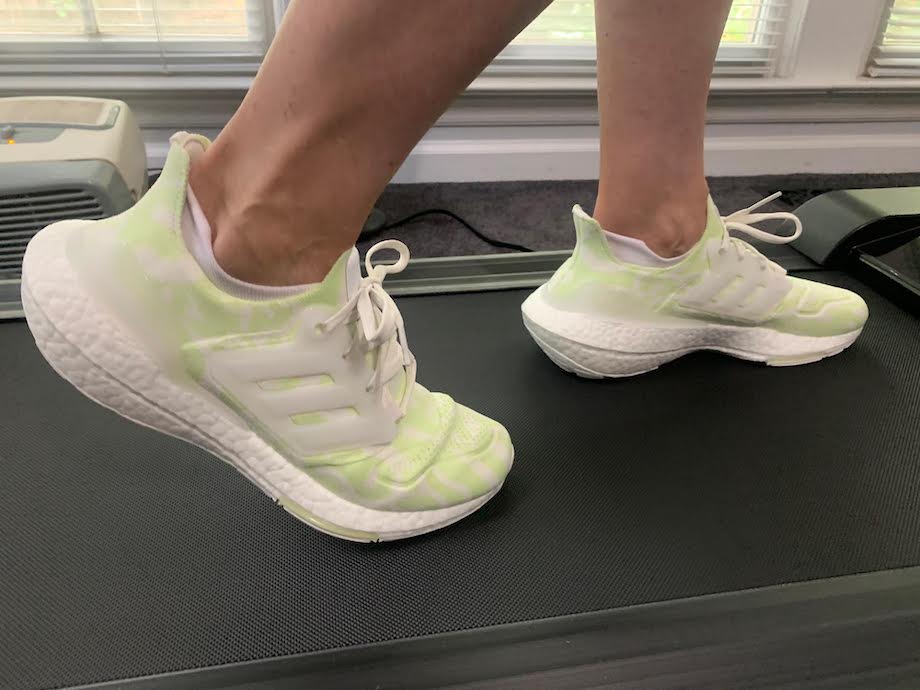
Parts of the Sole
The integrated parts of the lower half of the shoe are most responsible for providing stability and proper contact with the ground.
The ground directly strikes the outsole, which is outfitted with lugs (like treads on a tire). For trail runners, running shoes need to have a more aggressive lug to help with traction versus road shoes.
Running shoe anatomy also includes multiple performance-enhancing features. The medial post is part of the cushioned midsole. To help with stability and excessive pronation, firmer, less pliable material is inserted in the midfoot area.
This feature is included in motion control shoes and stability shoes. The former are for runners with excessive pronation who need a shoe to keep their foot and ankle complex in line. The latter are for flat footed runners who typically need more arch support. These features make both motion control and stability shoes heavier than regular old neutral shoes.
The shank runs between the midsole and outsole to provide stiffness and ensure the entire sole bends with the toes rather than at the arch.
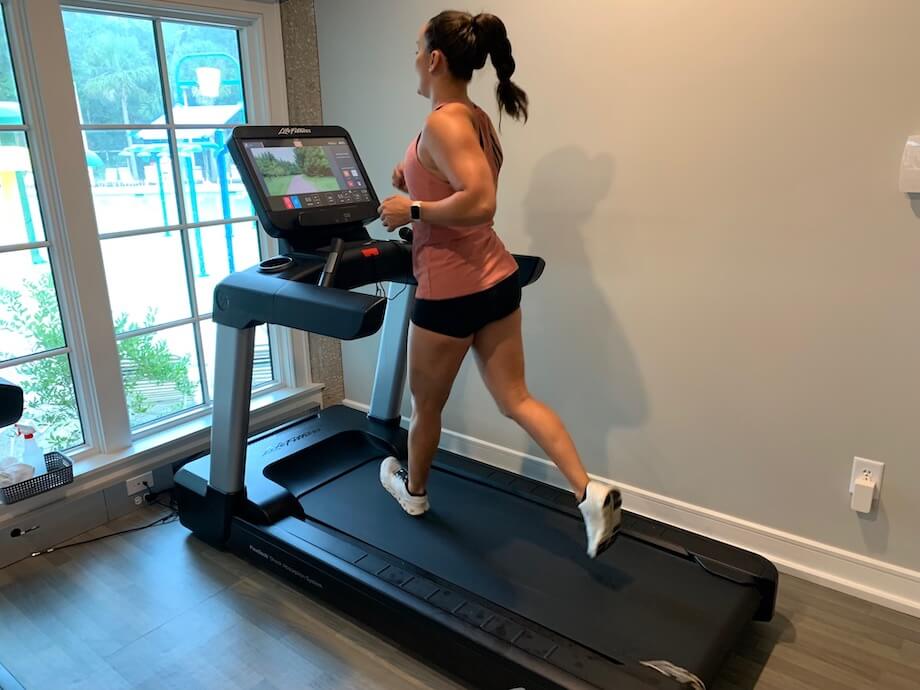
Shoe Soles And Running Form
Now, those of us who were alive way back in time in the early 2000s remember being berated with talk about running form and foot strike positions and how Nike had ruined the ankle mobility of an entire generation of athletes with its heavy cushioning and relatively large heel drop. (Heel drop is the difference in elevation from the heel to the forefoot. High heels have a large heel drop, flat flip flops have a small one.)
Heel striking was the devil! Long live the forefoot strike!
This hasn’t necessarily born out in competitive racing. For example, one study found that a large percentage of top marathoners use a heel strike, while even forefoot strike proponents agree the heel strike is best for ultra-marathons. Scientists rationalize it has more to do with individual physiognomy or preference, with many elite runners being able to alter the strike as necessary.
In his ground-breaking-in-a-pop-culture-type-of-way book “Born to Run,” Chris McDougall makes a convincing argument for barefoot running. His philosophy is that overpronation, high arches, and plantar fasciitis shouldn’t be fixed with medial posts and orthotics, but through strengthening the body through its natural ranges of motion.
Many people have taken the barefoot training even further, and believe humans can perform better while barefoot.
This theory has also suffered in recent years. “Maximal” shoes, far more than just padding to help prevent blisters, are engineered to help propel runners along faster with each stride. Rules have even been created to limit the amount of cushioning and material in midsoles. In middle- and long-distance running, the energy saving effects of advanced shoe technology appear to be too valuable to give up.
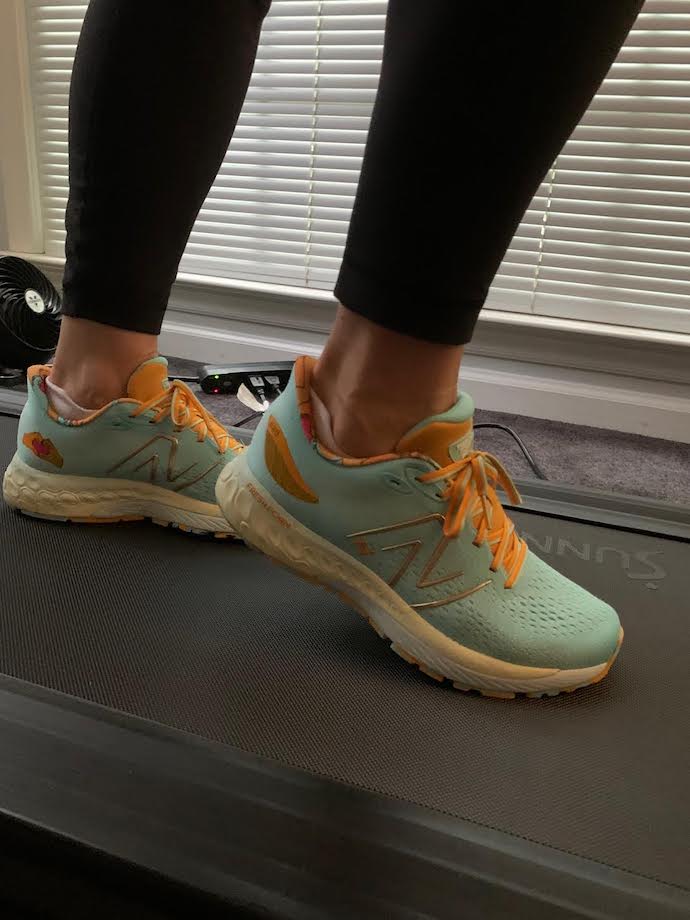
Parts of the Upper
The upper actually provides the feel of a shoe “fitting” right. While the sole acts as an outline for the foot, the upper molds itself over the foot like a fashionable fall sweater.
The tongue of the shoe helps shield the upper foot from the pressure of the laces. Note that some modern running shoes forego the laces-and-eyelets combo completely, opting instead for a continuous upper.
Perhaps no part of the running shoe has received as much attention this century as the toe box. While barefoot trends are a little hit-and-miss, the increased toe box has been almost universal. The toe box is as it sounds: the little box in the front of the shoe for the forefoot and toes. In the recent past many shoes seemed like ancient binding devices, but the 10 little piggies have been largely freed to expand and work as they were designed.
If you’ve ever been involved in a serious bulking cycle, you know what a heel tab is. There is no way you could possibly get down to put your shoes on without the little loop on the heel. Put on one of those mock-pregnancy suits and you will see what I mean.
The vamp is the little part you’d need to make sure to polish if it were a dress boot. Stand up straight, then look down at your shoes. The part you are seeing is the vamp. It connects to the quarter panel (the sides of your dress boot you can hide in your pant legs if you didn’t polish them). Scuffing a vamp has led to many schoolyard brawls.
The heel counter (hard plastic material cupped through the heel collar) helps to provide a better fit to improve shoe stability for a better running experience. It also helps with preventing the back of the shoe from grinding on the Achilles tendon.
Most shoes come with an insole (also known as a sock liner). It’s that little floppy bit of foam you can pull out of a shoe. Serious runners will trash this right away and insert a custom insole designed for their foot.
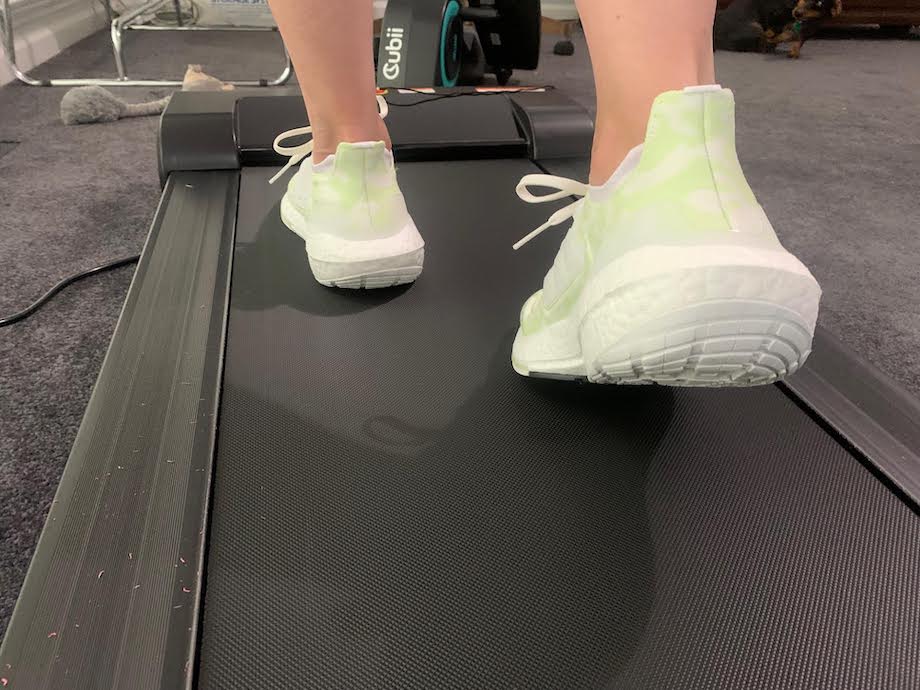
Cushioning in a Running Shoe
Regardless of the amount of cushioning in a midsole, modern shoe cushioning is typically made with a material known as EVA (ethylene vinyl acetate). EVA was developed as a lighter replacement for heavy polyurethane in the 1970s. While it has been all but ubiquitous in running shoes for 50 years, a new material is making a charge.
Thermoplastic polyurethane (TPU) offers more durability and a rebound-like energy-saving effect while running. Likewise, carbon plating has been limited in the rules of top-tier competitions for its ability to help a runner’s foot continue through the ground more efficiently.
The extra cushioning and support in a running shoe offers more robust shock absorption than other types of shoes. Walking shoes will not have the same type of lateral stability and are not designed to withstand the impact of consistent running.
The cushion pattern can also help dictate foot strike placement. A larger amount of heel cushioning encourages a heel strike, while a flatter shoe will encourage the midfoot or forefoot to strike first.
Anatomy of a Running Shoe FAQs
What are the different parts of a running shoe?
The upper and lower are the two main divisions, with the technologically advanced sole complex taking up most of the lower.
The upper acts like the body of a car, giving the shoe style and holding everything inside together. It’s what makes a Ferrari or a pair of Jordans look like a Ferrari or a pair of Jordans.
The lower, or the sole, provides external and internal traction as it directly engages the ground and the bottom of the foot.
What is the back of a running shoe called?
Just like the back of the foot, the rearward portion of a shoe is known as the heel. Its purpose, with the help of the heel counter insert, is to cup the achilles tendon to prevent the foot from moving around inside of the shoe. Think about how hard it would be to run in house slippers.
What are the bottom of running shoes made of?
Traditionally, different types of natural rubber compounds, based on expected terrain. Trail running shoes will have a more robust sole, while racing shoes meant for road running may have lighter air blown rubber to cut down on the amount of weight moved.
Soles can last anywhere from 300 to 500 miles, which means serious runners will replace their shoes often. Manufacturers are beginning to use TPU in outsoles to provide a longer lasting shoe.



